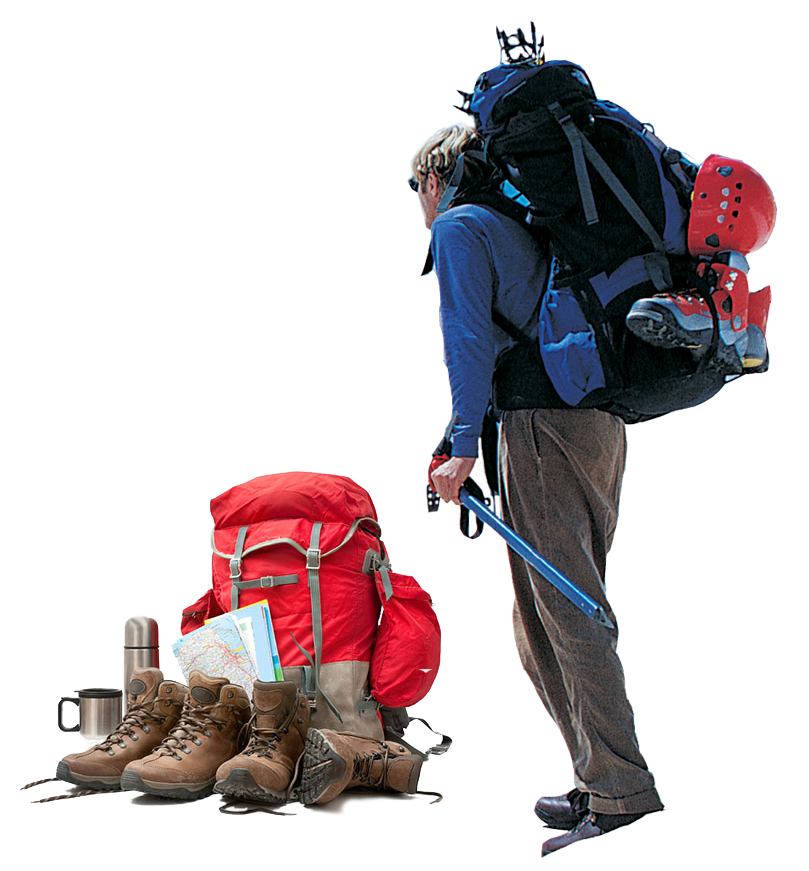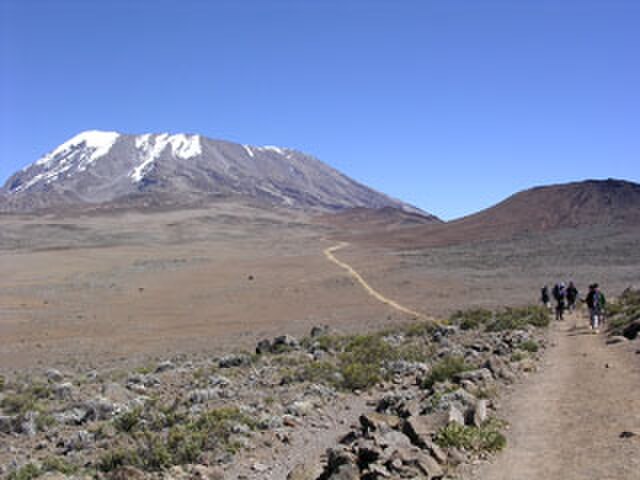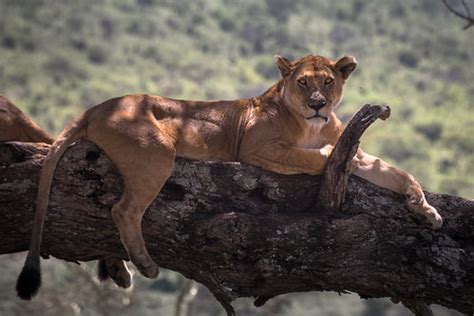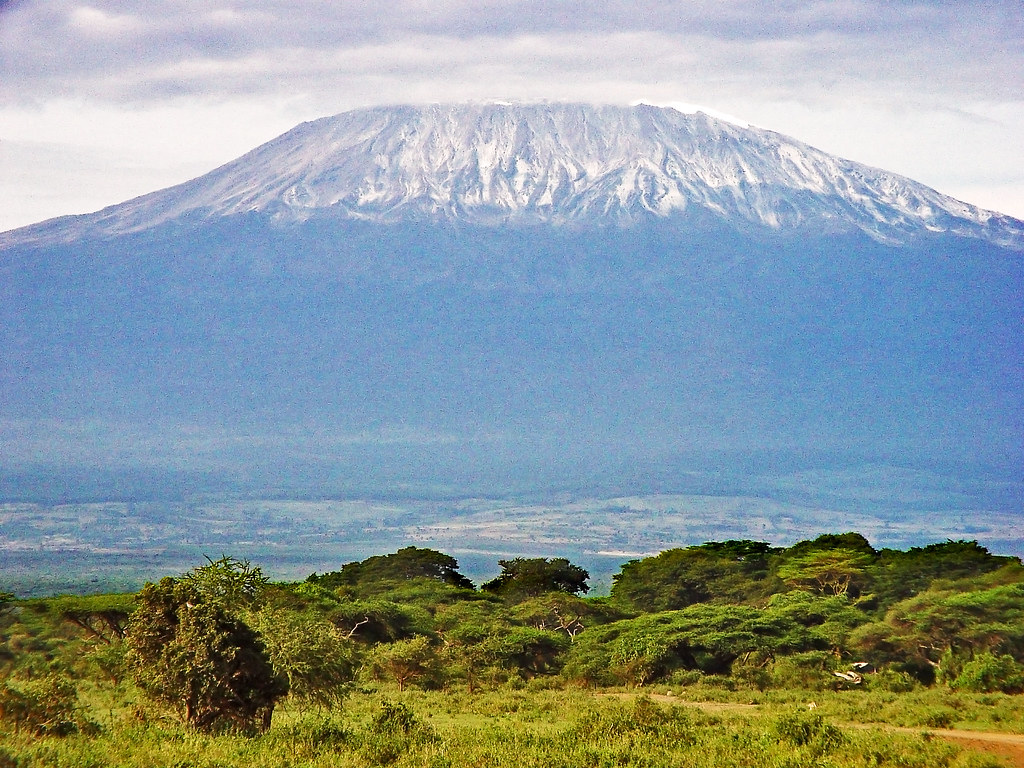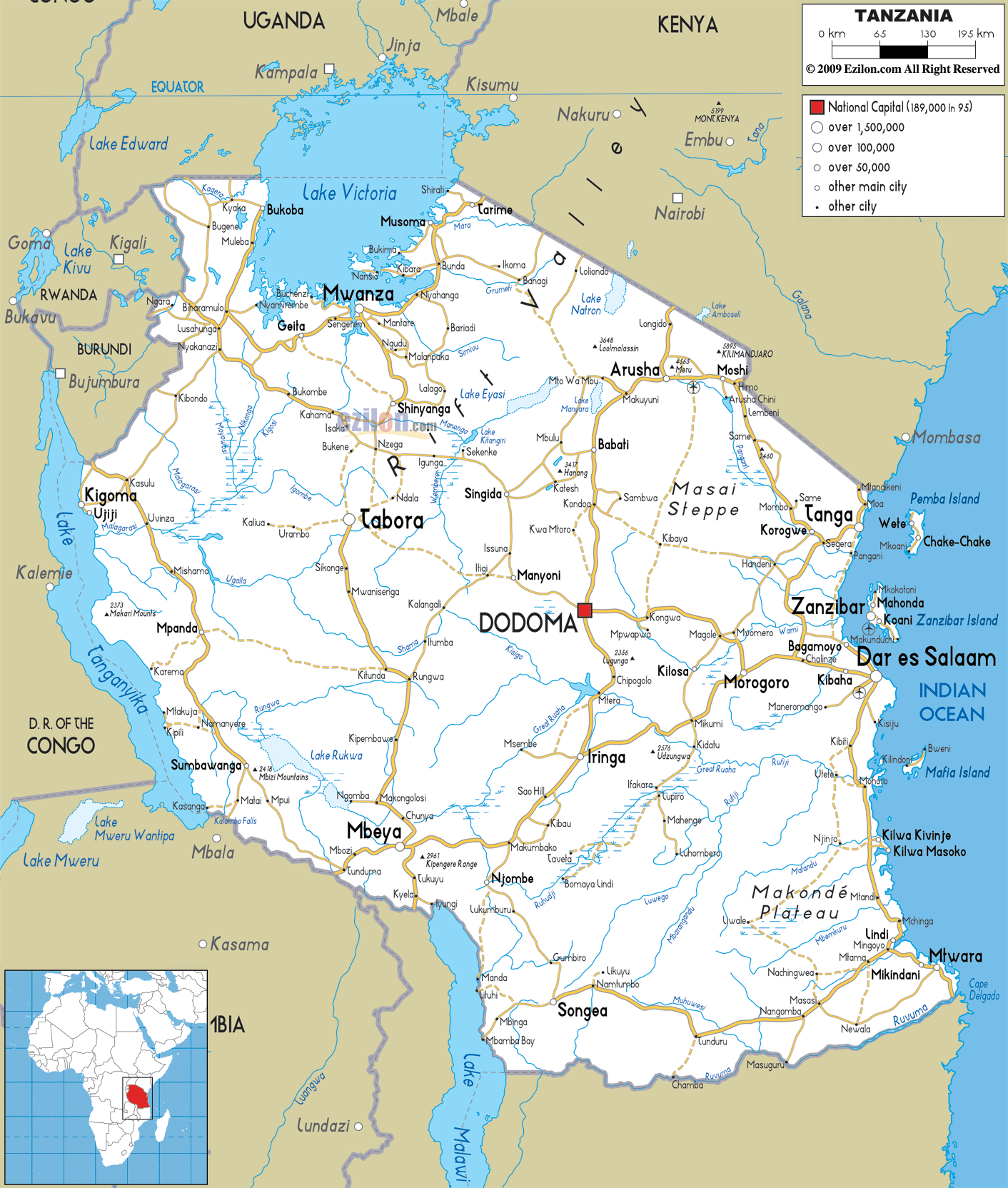What Essential Packing List for Climbing Kilimanjaro?
Tackling the highest peak on the African continent is no ordinary feat, and every seasoned climber will tell you that the key to reaching the Kilimanjaro Summit is preparation. You need to be well-equipped with the right gear for withstanding the varied weather conditions and achieving a successful climb.
From essentials to tackle the shifting weather conditions, to gear designed to make the trek more comfortable, we have covered it all. This complete Kilimanjaro Packing List will guide you through all the essentials that could make all the difference in your climb.
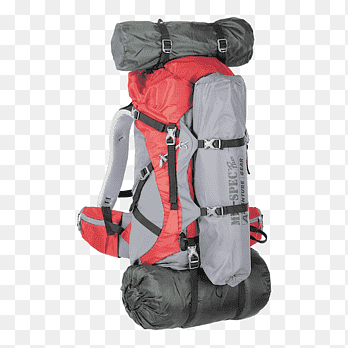
Proper gear preparation is essential for a successful Kilimanjaro climb
Packing For Kilimanjaro
Travelling to Kilimanjaro involves both international travel and backpacking. One key aspect of the Kilimanjaro Packing List is to keep your travel clothing and gear separate from your climbing gear, preferably in different luggage or duffel bags. You can leave these non-climbing essentials at a hotel or guide office and carry all the climbing essentials on your trek up Kilimanjaro.
Packing List for Kilimanjaro: The Daypack
For the actual climb, you'll need a medium-sized daypack (25–35 Liters). Your Kilimanjaro Daypack should include a sun hat, sunscreen, sunglasses, snacks, packed lunch, gloves, water, money, a passport, a camera, and extra warm clothing.
Packing List for Kilimanjaro: The Duffel Bag
The remaining gear for Kilimanjaro goes into a large, rugged, waterproof duffel bag, ideally of 95-litre capacity. This bag is carried by Kilimanjaro Porters from camp to camp and should not exceed 33 lbs. (15 kg). Also, it's advisable to pack your items in garbage bags before stashing them in the duffel for extra waterproofing.
Key Points:
- Separate travel and climbing gear into different bags
- The daypack should include essentials for daily hiking needs
- The duffel bag should contain the remaining clothing and gear and should be waterproof and lockable
- Keep the duffel bag weight under the specified limit (33 lbs. or 15 kg)
Factors That Influence The Kilimanjaro Packing List
Preparing your Packing List for Kilimanjaro involves careful contemplation of three essential factors - the weather, altitude, and the duration and type of your trek. These elements will significantly impact the gear you need for a successful Kilimanjaro Climb.
Impact Of Weather
During your Mount Kilimanjaro Hike, the weather is the most crucial factor to consider. The dry periods, January-March and June-October, are optimal for trekking, while April-May and November-December present more challenging weather conditions. Each altitude level, from the humid rainforest at 800m-3000m to the icy Glacial zone at 5000m-5895m, presents unique weather conditions, influencing what you pack for Kilimanjaro.
Altitude Considerations
The altitude on your Kilimanjaro Trek can make conditions more unpredictable and colder. Risks like frostnip and frostbite are more common at higher altitudes and get worse with low oxygen levels. This makes the selection of the right gear in your Kilimanjaro Gear List all the more crucial.
Duration And Trek Type
The length of your trek, typically between 5-9 days, dictates the quantity of gear you'll need. Even though Kilimanjaro Porters will assist in carrying gear, you should ensure your duffel bag's weight is manageable, ideally not exceeding 15kg-20kg.
Travel Documents
Navigating international travel requires a certain set of documents. Without these, your journey to the peak of Kilimanjaro could be over before it begins. Here's what must be included in the Packing List for Kilimanjaro:
- A valid passport is crucial (ensure its up-to-date and renew if needed)
- Keep a copy of your passport (either digitally or separate from the original)
- Valid visa; no visa is required for German or European passport holders
- Your overseas health insurance policy
- Immunization record (verify and update your shots if necessary)
- Your flight ticket (either a hard copy or an e-ticket)
- Carry a travel credit card
- Have some cash on hand
- Maintain a list of emergency contacts and known allergies, if any
Clothing Section
Climbing Mt Kilimanjaro requires thoughtful preparation due to the mountain's unique and often cold weather conditions. As temperatures can range from 18°C in the rainforest to -5°C at the peak, it's crucial to dress in layers that can be easily adjusted as the weather changes.
Waterproof Outerwear
Choose a breathable and waterproof jacket and trousers. Ensure they have a hood and enough room for additional layers underneath.
Down Jacket Or Thick Fleece
A down jacket or thick fleece is essential for the colder summit nights and evenings. If your down jacket is lightweight, consider adding a fleece jacket for extra warmth.
Base Layer
Lightweight base layers or thermals provide an extra layer of warmth during cold evenings and the summit night. As they stay closest to your skin, they should be soft and provide adequate comfort. Merino wool is a great material choice for this layer due to its warmth and comfort.
| Clothing Items for Kilimanjaro | |
|---|---|
| TOPS | BOTTOMS |
| Thermal Base layer (3-4) | Underwear (4-5 pairs) |
| Short sleeve trekking t-shirts (1-2) | Hiking trousers (1-2 pairs) |
| Long sleeve trekking t-shirts (2-3) | Winter Trekking Pants (1 pair) |
| Polartec fleece jacket (1) | Thermal Base layer (1-2 pairs) |
| Insulated winter jacket (1) | Waterproof shell pants (with side zippers) |
| Wind shell jacket (1) or lightweight rain jacket | |
| Thin gloves (1 pair) | |
| Thick gloves (summit day) | |

Layering system is crucial for adapting to Kilimanjaro's varying temperatures
Footwear And Headgear
Footwear and headgear are crucial components of your gear when Climbing Kilimanjaro, as they help protect your feet and head, respectively, from the harsh mountain conditions.
Footwear
- Opt for leather boots and treat them with waterproofing agents. Choose boots with sturdy ankle support and a rigid midsole.
- As feet tend to swell at high altitudes, ensure your boots have enough room.
- Carry spare laces and a dry footbed in case of dampness.
- Use regular trekking socks for the initial days and warmer woolen socks for summit night.
- Carry lightweight shoes or sandals to wear at camp for air circulation and comfort.
Headgear/Eyewear
- A stretchy, thin material or fleece Buff is useful for protection against sun, dust, and wind.
- UV400 sunglasses are essential to protect your eyes from strong UV rays.
- To protect yourself from sun exposure, wear a sun hat with a wide brim.
- As temperatures drop, a warm thermal hat is necessary to retain body heat.
| FOOTWEAR | HEADGEAR |
|---|---|
| Mid-weight hiking boots (1 pair) | Sun hat with a wide brim |
| Sneakers or sports shoes (1 pair) | Warm beanie or fleece headband |
| Trekking socks (4-5 pairs) | Bandana or neck gaiter |
| Inner socks (3-4 pair) | UV Band Sunglasses |
| Thick thermal socks (1 pair) | |
| Gaiters (optional) |
Basic Equipment
These are tools and items that are directly related to your climbing experience, ensuring your safety and comfort throughout the journey. Having a collection of these essential basic equipment can significantly impact the success and enjoyment of your trek.
Sleeping Gear
Chilly nights on Kilimanjaro call for a four-season or -20°C rated sleeping bag. Also, don't forget to pack a compression sack to minimize space usage. Additionally, you can carry an insulated mat and inflatable pillow to protect yourself from chilly weather.
Trekking Poles
Utilizing trekking poles is a matter of individual choice, yet they are highly suggested to aid with stability and lessen tiredness. You have the option to either rent or purchase these poles, but it's advisable to familiarize yourself with their use in your local surroundings before your trip.
Water Storage
You need to have the ability to carry at least 3 litres of water with you. A combination of a 2-3 litre hydration bladder and a 1-litre bottle is a good setup. Please note that disposable plastic bottles are not allowed on Kilimanjaro to protect the environment.
| BAGS | SLEEPING GEAR |
|---|---|
| Duffel Bag (>90 litres, waterproof) | Sleeping Bag |
| Daypack (25-35 litres) | Sleeping Mat |
| Waterproof pack cover | Sleeping Bag liner |
| Compression sacks | Compression Sack |
| Packing cubes for organizing | Inflatable pillow |
| Bag locks |
Toiletries
As there are no permanent showers in the mountains, you will be only given a hot water bowl to wash your face and hands at the camps. Hence, consider packing some items that promote hygiene and protect you from any kind of infection.
| ITEMS | DETAILS |
|---|---|
| Toilet Roll | Always carry one, you never know when you might need it. |
| Tissues | Helpful in the dusty desert zone. |
| Toothbrush and Toothpaste | Use eco-friendly products to maintain oral hygiene without harming the environment. |
| Wet Wipes | A convenient solution when showers are unavailable |
| Microfibre Towel | Lightweight and quick-drying, great for drying off after a water bucket clean-up. |
| SPF Lip Balm | Protects your lips from harsh UV rays at high altitudes. |
| Small Moisturizer | Counteract the dry air at higher elevations. |
| Broad Spectrum Sunscreen | UV rays become more potent at altitude, requiring adequate protection. |
| Eye Drops | To soothe eyes irritated by dry mountain air. |
| Insect Repellent | Necessary in the rainforest zone to ward off bugs. |
Special Note for Women:
To make your trek more comfortable, females can consider adding a urinating device such as a Shewee, an eco-friendly pee cloth like a Kula Cloth, and pack your preferred menstrual products regardless of your cycle timing, as high altitude can sometimes trigger an unexpected period.
Medical Supplies
While our team experts have a well-stocked first aid kit on hand, it's still important for you to carry supplies for minor injuries and blisters. If there's any uncertainty about what personal medical supplies to pack, consulting with your physician or a medical expert is often advisable.
- Sanitizing gel or wipes
- Products for mosquito protection (containing DEET or alike)
- Analgesics (like ibuprofen, aspirin)
- Medication for Kilimanjaro Altitude Sickness (such as Diamox)
- Anti-diarrhoea medicine (like Imodium Akut, activated charcoal)
- Antiseptic cream (like Bepanthen)
- Bandages and blister patches
- Water purification devices or iodine tablets
- Hypodermic Needle and Zinc Oxide Sports Tape for popping and dressing blisters
- If required, electrolyte supplements (in powder or tablet form)
Electronics
As you prepare for your Kilimanjaro Hike, know that there will be no charging facilities on the mountain. So, you'll need to plan your technology needs accordingly.
| TECH ITEMS | DETAILS |
|---|---|
| Head Torch and Spare Batteries | An absolute necessity, especially for the summit night. It allows hands-free operation. |
| GPS/Altimeter | Not a requirement but can be beneficial for monitoring your progress and altitude. |
| Camera | A digital camera with a lightweight tripod will help you take great shots of the mountain. Bring spare SD cards, and a battery pack as they deplete quickly in cold. |
| Power Pack | As there are no charging stations, a compact power pack with USB cables becomes invaluable. |
A Note To Climbers:
Plan your electronic Gear List for Kilimanjaro carefully to balance between necessity and weight, as each additional item adds to your load. Keep in mind the cold weather's impact on battery life and plan your power needs accordingly.
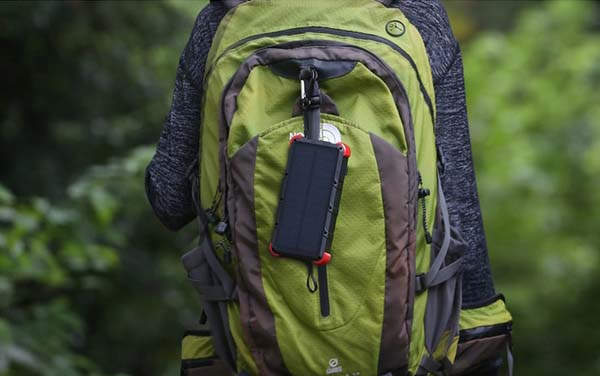
Essential electronics should be weatherproof and have backup power sources
Kilimanjaro Packing List With Estimated Prices
For avid climbers and trekkers, purchasing personal gear, boots, and sleeping bags can be a worthwhile investment. Let's have a look at some essential items and their estimated price range in USD:
| Item | Price (USD) |
|---|---|
| Hiking Boots | $100-$200 |
| Waterproof Jacket and Pants | $50-$200 |
| Base Layers | $40-$100 |
| Gloves | $20-$50 |
| Headlamp | $20-$50 |
| Daypack | $50-$150 |
| Duffel Bag | $60-$150 |
| Trekking Poles | $20-$100 |
| Sleeping Bag | $100-$300 |
Note: Remember, these prices are estimations and can vary based on brands, quality, and location of purchase. However, the alternative of renting equipment is also available for those climbers who don't want to invest in buying stuff themselves. At Wildman Safaris, we have the option of providing rental services for sleeping bags and some other essential gear.
What Not To Pack For Kilimanjaro
Remember careful packing for Mount Kilimanjaro Climbing also involves being mindful of things that should be left behind. Some items can take up unnecessary space, add weight, or simply not be needed on the mountain:
- Hair Dryer - There's no electricity on the mountain, and you won't be showering often.
- Loud Speakers - Opt for headphones instead, as loud music can disturb others.
- Laptops - Without charging opportunities, these are best left behind.
- Heavy Tripods - A lightweight one could work, but remember that fatigue is a factor.
- Makeup - You won't need it on the mountain, and it's generally not used.
- Universal Plug Adaptor - There are no sockets on Kilimanjaro.
- Pressurized Spray Bottles - These can explode at high altitudes.
- Alcohol - It's banned in the national park and not conducive to maintaining good health.
- Excessive Gear - Pack lightly as you or your porters will carry everything.
- Items Provided by Guides - Tents, chairs, camp stoves, and cooking gear are usually supplied.
- Computers and Tablets - There's no WiFi, and these devices are often fragile.
- Disposable Items - Aim for sustainability and bring reusable items.
- Fancy Clothing - Functionality is more crucial than style on the mountain.
Top Tips For Preparing Your Kilimanjaro Gear
Here are some top tips to ensure your gear preparation is on point:
- Preparing in advance is key. Don't wait until the eleventh hour to assemble your gear.
- Carefully go through our "Kilimanjaro Packing List" and cross-check it with what you already own.
- Hunt for discounts. Numerous sites offer high-quality gear for discounted prices.
- Practice Packing. Regularly pack and unpack your bag to have a thorough understanding of where each item is located.
- Get comfortable with your gear. Practice hiking in your local area with hiking boots, daypack, and trekking poles.
- Plan for the entire journey. Consider the period before and after your climb.
Fortunately, most hotels allow you to leave excess luggage while you tackle the mountain, so plan your Kilimanjaro Climb Packing List accordingly.
Conclusion
Proper preparation and packing are essential for a successful Kilimanjaro climb. This comprehensive packing list covers all the essentials you'll need for your adventure to the Roof of Africa. Remember that the right gear can make the difference between a successful summit attempt and an uncomfortable experience.
Focus on quality over quantity, practice with your gear before the climb, and don't forget that our experienced team at Wildman Safaris is always available to provide guidance and rental equipment to ensure you're properly prepared for this incredible journey.
Final Advice:
When preparing for Mount Kilimanjaro Climbing, remember that the key to reaching the summit is preparation. Invest in quality gear, test everything beforehand, and ensure you have allocated enough time for proper preparation. This way, you give yourself the best chance of making it to Uhuru Peak successfully.
